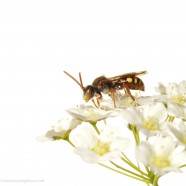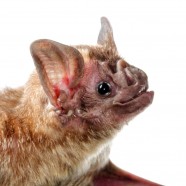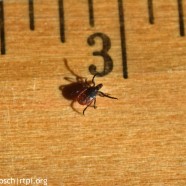Cuckoo Bee
This Cuckoo Bee (Nomada sp, Ruficornis Group) is a very interesting subject. As you can see they have a very showy outward appearance, but come from a very basic lineage, thus why they have such a wasp-like appearance. While it is difficult to identify to species these Cuckoo Bees are fascinating to observe and around this time of year. They don’t collect pollen, but rather parasitize other bees, by laying their eggs in Mining Bee nests. Photographed by RTPI Affiliate Sean Graesser for the Meet Your Neighbours global biodiversity project in Connecticut for the Roger Tory Peterson Institute...
Read MoreMale Yellow Warbler
This male Yellow Warbler is ready to take up residence in your garden! Their abundance, friendliness, and usage of habitats in open areas and often near people help make them an easy target for Brown-headed Cowbirds. After the Yellows build their nest a female Cowbird may end up putting an egg in it as well. While some Yellow Warblers will end up raising this young bird to the detriment of its own, others will build another nest over the original parasitized one. It is always an odd sight to spot a huge Cowbird fledgling being fed by the little Yellow parent. But for now all this guy is...
Read MoreBrown-headed Cowbird Pair
Last week I saw my first Brown-headed Cowbirds of the year, one of the blackbird species well known for making their way north in March. Here you can see a pair feeding in grasslands with the female on the left and the male, sporting his brown head, on the right. The species is a brood parasite, laying their eggs in the nests of other species, with familiar backyard birds like the Yellow Warbler being a common victim. I have seen them feeding the comically enormous fledglings quite often! Scott Kruitbosch Conservation & Outreach Coordinator
Read MoreCommon Vampire Bat (Desmodus rotundus)
Very appropriate for Halloween Eve, this Common Vampire Bat (Desmodus rotundus) does indeed feed on blood…but they would never be coming after you! Unless you are some sort of livestock in Central or South America you will be just fine. Photographed by RTPI Affiliate Sean Graesser for the Meet Your Neighbours global diversity project.
Read MoreCool mornings, warm bodies
Here’s an adult female deer tick that I photographed yesterday on this ruler (inches). They are actually rather large compared to young ticks, or nymphs. I pulled another one off my dog this morning. If you live near or frequent an area or habitat prone to ticks be aware that at this time of year the cool autumn mornings can lead these parasites to find any warm body they can, leaping on to mammals quickly. Thankfully you should be able to spot them if you check carefully.
Read More








